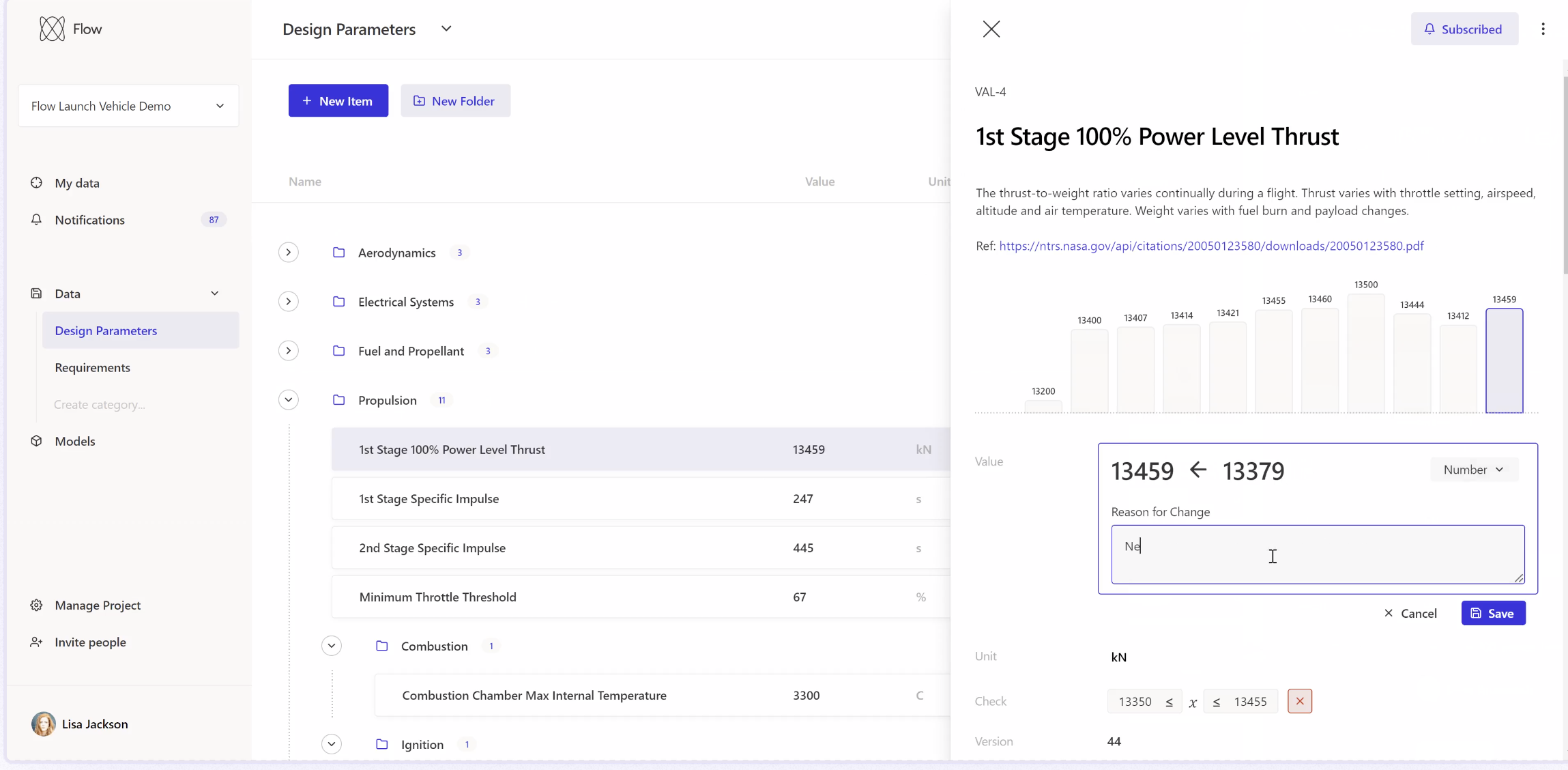Software engineers have a host of tooling to organize their projects, chief being Git software like GitLab or GitHub, but hardware engineers today lack that same organizing principle. They are stuck with a bunch of tech that doesn’t communicate well with each other, leaving them to build Excel spreadsheets to organize their work, a method that is prone to errors due to its manual nature.
Flow Engineering wants to fix that system and give hardware engineers, the folks who build complex systems like rockets and race cars, the same kinds of tools their software counterparts have.
Today, the company announced an $8.5 million seed round.
Pari Singh, the founder and CEO at Flow, says they are replacing spreadsheets and helping bring automation, integration and collaboration to the hardware engineering process, which he says hasn’t evolved much over the last 30 years. These engineers work in various modeling software, then have meetings or share changes via email and spreadsheets, none of which really takes advantage of the digital realm in any true sense.
“They might be working in Excel models, MATLAB models, simulation models or CAD models. The issue is that these models live in different tools, and they don’t speak to each other, which means there’s a problem around fragmentation. We haven’t got a single source of truth for design. So what Flow does is it glues all these models into one place, and helps engineering teams know if they’re meeting their core requirements or not,” Singh told TechCrunch.
He says that most large companies try to roll their own, but the problem his startup is trying to solve requires a level of focus that large companies typically lack in spite of their vast resources. He says that what these companies typically do is roll their own automations, but he believes they are missing the real solution.
“And what these engineering teams need isn’t automation, but abstraction, and that’s a very subtle, very important shift in how we look at that problem space, but which completely changes the solution you build,” he said.

Image Credits: Flow Engineering
The product is currently in private beta, so they are in very early days of the company, but the plan is to use the money to continue building and refining the solution before they deliver a generally available solution next year.
The goal is to replace the spreadsheet for starters, and then layer on more features over time. “Today we have a really clear use case, which is to replace the Excel spreadsheet for engineering design parameters and requirements. And we help link those requirements to those design parameters. And over time, as we build out more and more integrations, we’re going to be able to provide more value in a fairly productized manner,” Singh said.
The startup has around a dozen employees and plans to round out at around 20 next year. As he builds the company, Singh says diversity is a key element for him, but it’s a challenge to find diverse talent, particularly because people experienced in this area tend to be male.
“When I talk about the specialty of the mechanical engineering and hardware engineering market, the industry that I come from, it has a real problem around diversity. And that’s a really important factor for us…and we really see ourselves as being a company that represents a new age of engineering. And we want to be able to do that in tool and in product and how we communicate to customers, but also who we are,” he said.
The $8.5 million seed investment was led by EQT Ventures with participation from Backed VC and several prominent industry angels.
